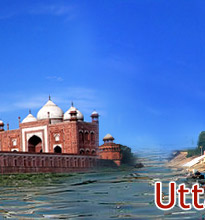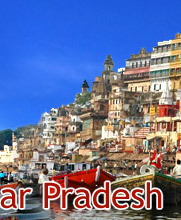 Ghaziabad
is one of fast growing Industrial town of North India. Ghaziabad is
situated about 1.5 km from the Hindon River. Ghaziabad is bound by
Meerut in North and on the south by Bulandshahar. Situated in Western
Uttar Pradesh close to Delhi, Ghaziabad has more than 14000 small,
medium and large industrial units scattered all over the city. The city
is also home to upcoming posh localities that have completely changed
its face from a sleepy industrial town to a modern swanky looking suburb
of Delhi. In fact, the city has been featured in Newsweek Top 10 most
dynamic cities in the world in the year 2006.
Ghaziabad
is one of fast growing Industrial town of North India. Ghaziabad is
situated about 1.5 km from the Hindon River. Ghaziabad is bound by
Meerut in North and on the south by Bulandshahar. Situated in Western
Uttar Pradesh close to Delhi, Ghaziabad has more than 14000 small,
medium and large industrial units scattered all over the city. The city
is also home to upcoming posh localities that have completely changed
its face from a sleepy industrial town to a modern swanky looking suburb
of Delhi. In fact, the city has been featured in Newsweek Top 10 most
dynamic cities in the world in the year 2006.The place is relatively new in the chronicles of History. Ghaziabad was founded in the year 1740 by emperor Ghazi-ud-din. He is supposed to have built an architectural marvel for himself. It was a spacious palace that consisted of 120 rooms of masonry with pointed arches. Only the gate, a few portions of the boundary wall and a massive pillar about fourteen feet in height remain now. Ghaziabad has appeared prominently during the mutiny of 1857. River Hindon that flows through Ghaziabad was the site for the battle between Mutineers and British Forces in which, the former were crushed convincingly.
Ghaziabad is primarily an industrial city with manufacturers in railway coaches, diesel engines, electroplating, bicycles, picture tubes, tapestries, glassware, pottery, vegetable oil, paint and varnish, heavy chains, automobile pistons & rings, steel pharmaceuticals, liquor, etc. It is one of the most industrialized cities in Uttar Pradesh.









